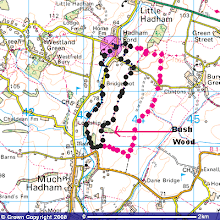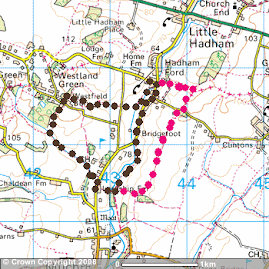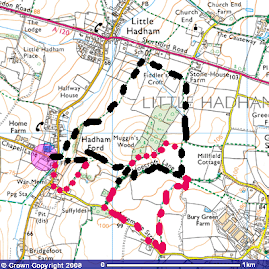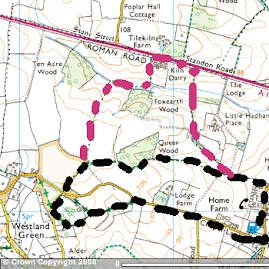At the junction of the path I had come off and the large, wide ride I noted a patch of bramble in a ditch upon which were plenty of Meadow brown butterflies, a solitary male Large skipper and several bee species, mainly Bombus terrestris. I also clocked a small, very pale damselfly which I thought would make a good photo for my article as it was posing upon bramble leaves.
As I approached I noted the white legs and slightly pink tones to the abdomen towards the final few segments . This immediately informed me it could be White Legged damselfly, a new species for me in Herts and Essex region. I managed a few photos with a macro lens and blew them up on the back of the camera to check further. I was fairly sure this was White legged but needed to check my field guides at home. Immature Common blue damsels can be a confusion species, so checking was vital.
I continued the walk, photographing 4 spot chaser and Red eyed damselfly by the pond before heading back to the car and home.
I checked my books and was now sure this was White legged damselfly (Platycnemis pennipes.)
The following day, I sent the photos off to the newspaper, labelling it as such and then took a few moth specimens around to Graeme J Smith for id confirmation. I casually mentioned I had recorded the damselfly and he was most surprised that I had encountered it. I returned home and forwarded a photo to Hatfield Forest office who then forwarded them to the recorder of all species for the Forest, Stuart Warrington.
This morning, Wednesday, he emailed to say that the id was correct and even better, it represented a new species for the forest.
He pointed out the diagnostic identification points: femur and tibia with bristles, stripes along the thorax, bar across the top of the head and an opaque shade to the pterostigma. Fortunately, all these important elements could be seen in the photo I had forwarded to Henry Buxton, Warden of the forest.
This afternoon, I returned to make sure I had given the correct directions and site to the office and also to improve on the photos from Monday afternoon.
A very pleasing find and a discovery of a new species for such a large area as Hatfield Forest is not something that comes along very often.
 |
| Femur and tibia markings with the diagnostic bristles |
 |
| Who you looking at! |
 |
| Legs and the stripes on the thorax fit for White legged |
 |
| Good markings for this species |
 |
| As this is an immature specimen, the orange/pink tones on the final few segments of the abdomen look perfect for White legged. The pterostigma can also be seen here to be opaque and orangey. |












































